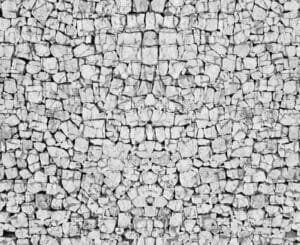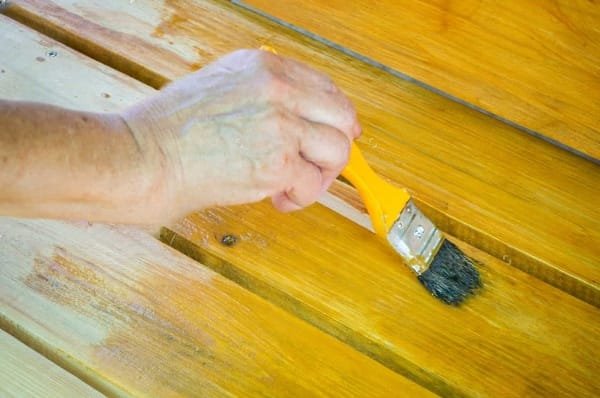Understanding Right Texture
Wall textures refer to various surface treatments applied to interior walls, which play a significant role in shaping the overall aesthetic and ambiance of a room. These textures can range from smooth, polished finishes to rugged, distressed surfaces, each contributing uniquely to the design theme of a space. The choice of wall texture not only affects the visual appeal but also influences the perception of space, enhancing or diminishing the room’s characteristics. For instance, a smooth finish often conveys elegance and sophistication, while a textured finish can add depth and interest.
Common types of wall textures include smooth, matte, and textured finishes, each achieved through different techniques and materials. Smooth textures are typically created with paints or drywall finishes, resulting in a sleek and modern look. Matte finishes, on the other hand, provide a soft, non-reflective surface that can evoke warmth and coziness, making them ideal for living rooms and bedrooms. Textured finishes encompass a broad spectrum, such as stucco, brick, or even faux finishes, which can accentuate a rustic or artistic vibe in any setting.
The choice of materials plays a vital role in achieving these textures. For example, drywall is commonly used for smooth finishes, while plaster can be manipulated to create more intricate textures. Wallpapers offer another alternative, as they come in a variety of finishes and designs that can significantly alter a room’s atmosphere. Moreover, wall textures can also affect how light interacts with the surface, thereby influencing the entire mood of a space. A well-considered texture choice can create visual interest, define areas within open-concept homes, and enhance the overall design narrative of a room.

Factors to Consider When Choosing Wall Textures
Selecting the appropriate texture for your walls is an essential decision that can significantly influence the overall aesthetics and functionality of a space. Several key factors should guide this choice, starting with the functionality of the room. For instance, areas with high foot traffic, such as hallways or living rooms, may benefit from more durable textures that can withstand wear and tear. Textures designed for easy cleaning, like those that are smooth or have a semi gloss finish, can be ideal for family-oriented spaces where spills and fingerprints are common.
The style of your home also plays a crucial role in determining the right wall texture. Traditional designs may be complemented well by textures such as stucco or wainscoting, which add depth and character. Conversely, modern interiors often favor sleek, minimal textures that create an airy and open atmosphere. It is essential to ensure that the chosen texture harmonizes with existing elements, including furniture, flooring, and decors, to create a cohesive look throughout your home.
Lighting conditions within the room should also be taken into account when selecting wall textures. Natural and artificial lighting can greatly affect how textures appear; for example, light can accentuate the grooves in a textured wall or diminish the visual impact of a matte finish. In spaces with ample natural light, more pronounced textures can create a dynamic and inviting atmosphere, while softly textured walls can provide warmth and coziness in dimly lit areas.
Additionally, maintenance requirements should not be overlooked. Textures that accumulate dust or require frequent touch-ups may not be practical for some homeowners. Therefore, it is vital to choose a wall texture that not only aligns with personal style preferences but also matches the practicality of maintaining the space. Ultimately, a well-considered choice in wall textures can enhance both the visual appeal and the durability of your interiors.
Popular Wall Texture Techniques
When considering wall textures, homeowners and designers have a variety of options that serve both aesthetic and practical purposes. Among the most popular techniques are knockdown, stipple, and trowel textures. Each method offers distinct characteristics and can help achieve different design styles, from rustic charm to contemporary elegance.
The knockdown texture is widely appreciated for its sophisticated, soft look. This technique involves spraying a mud mixture onto the wall, followed by flattening the peaks with a trowel or knife. The result is a dimply surface that diffuses light effectively, reducing glare and hiding imperfections. Knockdown textures are versatile and can complement various styles by adding depth without overwhelming the space. Additionally, this texture is generally easier to clean, making it practical for high-traffic areas.
Stipple texture, on the other hand, presents a more whimsical and textured surface. Created by applying a special brush technique or using a stippling brush, this finish results in a series of raised patterns that can vary in size and shape. The stipple finish is ideal for traditional or eclectic interiors but can also be adapted for contemporary designs. One notable advantage of stipple textures is their ability to conceal wall imperfections effectively, giving an older wall a refreshing and rejuvenated appearance.
Lastly, the trowel technique is often favored in modern designs for its clean, minimalist aesthetic. This technique is achieved by applying a thin layer of joint compound and smoothing it out with a trowel, resulting in a sleek and polished surface. The trowel finish is perfect for achieving a contemporary style since it offers the illusion of space and brightness. Its smooth surface is also appealing in terms of easy maintenance, requiring less frequent cleaning compared to more textured options.
Ultimately, selecting a wall texture technique depends on personal taste, desired style, and practical considerations. By understanding these options, homeowners can make an informed choice that aligns with their aesthetic vision while fulfilling functional requirements.
Matching Wall Textures with Interior Design Styles
When considering wall textures, it is crucial to understand how they can effectively complement various interior design styles. Each design style possesses unique characteristics that can be enhanced by specific wall textures, contributing to the overall aesthetic and thematic consistency of a room.
For example, traditional interior design often emphasizes elegance and warmth. Here, textures such as wainscoting or smooth, flat finishes can evoke a classic appeal. Textured wallpaper featuring floral or damask patterns can further enhance the traditional look, bringing a touch of sophistication and depth to the walls.
In contrast, modern design leans toward minimalism and cleanliness. A sleek, smooth wall can work wonders in a modern space, allowing the simplicity of the design to shine. Alternatively, a subtle stucco or a concrete finish can add a bit of character without overwhelming the clean lines typical of modern aesthetics. These textures can serve to highlight the functional aspects of the room.
The industrial design style, characterized by raw materials and an unfinished look, thrives on textured walls. Exposed brick, rough plaster, or reclaimed wood panels can create an edgy yet inviting atmosphere that is synonymous with industrial spaces. These textures not only bring warmth but also an element of authenticity, enhancing the overall experience within such environments.
Finally, eclectic design embraces a mix of styles and textures, allowing for a more personalized and vibrant look. Layering different textures can create visual interest; for example, a textured wall painted in a bold color can serve as a striking backdrop for a collection of art pieces. In this style, the key is to balance diverse elements while maintaining cohesion through color and texture choices.
Ultimately, selecting the right wall textures for your desired interior design style involves considering both the aesthetic and functional aspects. Each texture offers its unique contribution, enriching the atmosphere and experience of a space.
Color and Texture: Finding the Perfect Balance
The interplay between color and texture in wall design is fundamental to creating aesthetically pleasing environments. The choice of color can significantly influence the perception of texture, while textured surfaces can modify how colors are perceived. For instance, a matte finish may absorb light and appear softer, enhancing lighter hues, whereas a glossy texture can amplify contrast, making colors appear more vibrant. It is essential to consider how these elements work together to build a cohesive look within the space.
Finding the right balance between color and texture involves assessing the desired mood and functionality of a room. Lighter colors tend to create an illusion of spaciousness, when paired with flat or slightly textured surfaces that do not overpower the light tones. This combination can foster a sense of calm, making it ideal for bedrooms or meditation spaces. On the other hand, deeper and bolder colors, when used with rich textures, can produce a dramatic effect, making them suitable for feature walls in living rooms or dining areas where a more dynamic atmosphere is desired.
To coordinate colors and textures effectively, it is crucial to establish a harmonious palette. Choose a primary color that resonates with the intended mood, then select textures that complement or contrast with it. For example, a soft beige wall with a suede texture combined with dark wood accents can evoke warmth and coziness. Additionally, the psychological effects of certain color and texture combinations should not be overlooked; warm colors paired with rough textures can stimulate energy, whereas cool colors with smooth textures may promote relaxation.
In conclusion, the relationship between color and texture is a vital consideration in wall design, influencing not only aesthetics but also the psychological comfort of the space. Thoughtful combinations can transform any room, enhancing both its visual appeal and the emotional environment for its inhabitants.
DIY vs. Professional Application of Wall Textures
When considering wall textures, one significant decision is whether to apply them yourself or hire a professional. Each approach has its benefits and drawbacks, influencing your overall project outcome and experience. DIY wall texture application can be an appealing option for those looking to save money and enjoy a hands-on creative process. There are numerous tools and materials available for this purpose, including trowels, rollers, spatulas, and texture sprays. For relatively simple textures such as knockdown or slap brush, a homeowner with basic skills might find the process manageable.
However, DIY projects do come with challenges. Achieving a uniform finish, especially on larger surfaces, may require extensive practice and an understanding of the technique involved. Consequently, time investment and potential for errors should not be underestimated. Mistakes can lead to added costs due to the necessity of correcting issues or re-application. Additionally, the task can become daunting when dealing with more complex textures such as Venetian plaster or stucco, where precision is paramount.
On the other hand, hiring a professional guarantees a certain level of expertise and quality. Professionals have the experience and tools necessary to create intricate designs that may be difficult for an amateur to replicate. They can also save you time, allowing you to focus on other aspects of your home improvement projects. However, the cost is a notable consideration; professional application can be significantly more expensive than a DIY approach. Therefore, it is essential for readers to assess their skill levels and the complexity of their desired texture before making a decision.
Maintaining and Refreshing Textured Walls
Textured walls can add depth and character to any room, but maintaining their appearance is essential to ensure they continue to enhance your interior space. Regular maintenance will help in preserving the texture and ensuring it remains visually appealing over time. To begin with, it is crucial to dust textured walls periodically, as they tend to collect dust and dirt more than smooth walls. A soft microfiber cloth or a feather duster can be effective for this purpose, allowing you to gently remove debris without damaging the texture.
When it comes to cleaning stained or heavily soiled areas, it is advisable to use a mild cleaning solution. A combination of warm water and a few drops of dish soap or a pH-balanced cleaner is often sufficient. Use a soft sponge or cloth to dab the solution onto the wall, avoiding excessive scrubbing which can damage the texture. For those with darker textures or painted surfaces, consider rinsing with clean water afterward to prevent any residue buildup.
As time goes by, you may notice the need to refresh or reapply the texture on your walls. Signs that this may be necessary include fading color, peeling, or significant wear and tear. If you decide to reapply texture, ensure that the surface is clean and dry. Depending on the type of texture, various products are available, including spray-on textures, premixed bags, or ready-to-use kits that provide an easy solution for a DIY project. Prepping and priming the wall before application can significantly enhance the durability of the new texture.
In conclusion, by implementing regular maintenance practices and being attentive to the signs of wear, you can effectively preserve the appearance of your textured walls. Appropriate cleaning methods and timely refreshes will not only keep them looking great but will also contribute to the longevity of the texture you have chosen for your space.

Incorporating Texture into Small Spaces
When it comes to decorating small spaces, choosing the right wall texture can significantly influence the overall aesthetic and perception of size. Texture can offer visual depth and interest, ultimately enhancing the character of a cramped area. Start by selecting a texture that complements the room’s purpose; for instance, softer textures can create a calming atmosphere, whereas sharper textures can invigorate a lively space.
One effective method for incorporating texture in small rooms is to utilize a single accent wall. This approach allows for a bold expression of texture without overwhelming the area. Consider applying a textured wall treatment such as a stucco finish, wood paneling, or exposed brick on one wall. This can draw attention and create a focal point, giving a sense of spaciousness by drawing the eye upward. Additionally, muted colors can help maintain an airy feel, ensuring textures enhance rather than dominate the space.
Another option is to introduce layered textures using accessories, such as wall hangings or shelves. Textured fabrics, like woven baskets or macramé pieces, can add dimensions without taking up valuable physical space. A strategically placed mirror on a textured wall can also reflect light, further contributing to an illusion of openness while showcasing the wall design.
Moreover, consider incorporating vertical textures which can give the illusion of height, making the ceiling appear higher than it is. This can be achieved through techniques such as vertical shiplap or long stripes in paint. Lastly, maintaining a cohesive color palette throughout the room, while introducing different textures, creates harmony and prevents cluttering, allowing the room to feel more spacious and inviting.

Conclusion: Making Your Textured Wall Choice Count
In choosing the appropriate wall texture for your space, it is imperative to consider various factors that play a significant role in the aesthetic and functional outcome of your room. The right texture can dramatically influence not only the visual appeal of your environment but also its emotional resonance. A well-chosen wall texture can create a welcoming atmosphere or evoke a sense of sophistication, depending on the design direction, materials, and finishes selected.
Additionally, understanding the architectural style of your home is crucial when selecting a wall texture. For instance, a smooth finish may be more suitable for modern designs, while a textured surface can enhance the warmth and character of traditional or rustic interiors. Elements like lighting and color palettes also interact with wall textures, affecting how they are perceived within the space. Therefore, careful consideration of these aspects is necessary to achieve harmonious design.
Moreover, the functionality of the texture should not be overlooked. Some textures are more resilient and easier to maintain than others, thus impacting long-term satisfaction with your choice. When thinking about wall textures, consider both the practicalities of upkeep and the intended use of the area—high-traffic zones may benefit from durable textures that can withstand wear and tear.
Ultimately, selecting the right wall texture is a balanced process of personal preference and practical considerations. By thoughtfully weighing these factors, you empower yourself to make a confident decision that enhances the overall experience of your home. Remember, the right texture can transform not just the wall it adorns but also the entire ambiance of the room, making your environment more engaging and inviting.


